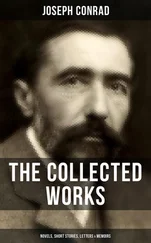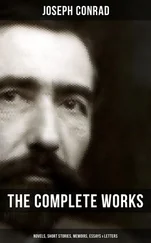That this was to be one of the earliest collections to be planted in England is not entirely surprising. *The creation of a pinetum required not only a serious budget but a large amount of empty ground, separate from any other garden feature. In 1829, 8 acres of the south park were given over to the plan and the ground began to be formed in the summer. Paxton carried the seeds of the Douglas fir, the pride of California and reputed to reach 200 feet high, from London wrapped in his own hat. A Norfolk pine was fetched from Ireland by Andrew Stewart, Paxton’s foreman in the kitchen garden. A giant redwood, the monkey puzzle, hemlock spruces and the Japanese white pine were purchased and planted along with tall larches. In all, over 50 species of pine were mixed with cypress, juniper, Salisburia, thuja and yew, creating a collection of every kind of hardy conifer that could possibly be procured, each planted according to its botanical classification and clearly named on painted wooden tallies. According to the Duke, the pinetum was quickly admired ‘but no two of a party take the same view of it; one extols the scenery, another is in raptures at the old oaks, and a third wonders and asks, why I plant the fir trees so thin’.
It must have been tremendously invigorating for the young Paxton to have control over the conception and planting of such a valuable and extensive collection, combining scientific with ornamental purpose. It is possible that even at this early stage, he conceived it as part of a much larger collection of trees, an arboretum, which in some years’ time would be planted around a new 4-mile walk through the pleasure grounds since part of the new walk was already completed by the time the Duke returned to Chatsworth again in the summer. In addition, the west garden was now newly planted and Cibber’s great sphinxes had been moved there.
So pleased was the Duke with his gardener that he took him to Bolton Abbey – his property in Yorkshire – to shoot. Paxton was ‘enchanted’ – quite the best reaction for a Duke proud of his castles and palaces, deeply desirous that they should be admired and provide enjoyment for his visitors. As if he needed further reason to value the gardener, the fruit ripening in the new greenhouses, particularly melons, figs, peaches and nectarines, started to win medals at the Horticultural Society shows at Chiswick House.
The Duke was becoming deeply charmed by Paxton and began to give him increasing responsibilities, including that over all the woods and forests. In three years, the gardener had shown that he was reliable, intuitive, a practical empiricist when it came to designing plant houses, thoroughly capable of achieving whatever he set his hand to, and, furthermore, a dreamer of schemes to improve the landscape of the park in keeping with the very latest horticultural fashions. As head gardener and forester he now hired and paid his own men, managed their labours and ran his own accounts. These accounts still had to be submitted to the Chatsworth agent, and to the solicitor, Benjamin Currey, but they marked Paxton’s status and responsibility. Not only did the Duke sanction the building of a new office at Paxton’s house in the kitchen garden, but he increased his salary threefold to reflect his seniority within the household. As ‘Gardener and Woodman’ Paxton was now to be paid £ 226 a year, which included an allowance for finding and keeping a horse.
The increasing expenditure on the gardens and pleasure grounds during these first years indicates the changes that were being wrought. It rose from £ 505 to almost £ 2,000 by 1829, much of which was spent on the numerous new glasshouses in the kitchen garden. In addition, the Duke’s own private account books show that he gave a total of £ 400 to Paxton over several months, to be used for ‘new stoves’. It must be said that in the context of the Duke’s wider spending, these sums were almost insignificant. Tens of thousands of pounds were being spent on Wyatt’s improvements to the house and thousands more on collections of books, sculpture, art and furniture. The Duke was happy to spend £ 942 during Doncaster races week alone in his efforts to outshine his neighbour the Duke of Rutland.
Just before Easter 1830, the Duke purchased a large weeping ash from a nursery garden near Derby. Around 40 years old, its roots alone were 28 feet in diameter, and its branches radiated on each side of the trunk to a distance of 37 feet. It weighed 8 tons. Paxton was dispatched to engineer its particularly problematic removal and carriage to Chatsworth. He took with him with 40 labourers, at least 6 horses and a new machine constructed to his own design by Messrs Strutt of Belper. By Good Friday, the Duke was in a lather of anticipation. ‘Up at 6 in hope tree had come but it did not all day.’ He went to church instead.
On the first attempt to lift the tree from the ground, the strong chain snapped and it was some time before it was ready to be moved the 28 miles to Chatsworth, just managing to squeeze through toll bars along the route, contrary to the expectations of the many doubters. Four days after they had set out to collect it, the tree arrived at the park gates which had to be lifted from their hinges, parts of the walls taken down and several branches lopped off to allow it in. Finally the Duke met the weeping ash at the new northern entrance to the house. He was delighted, declared it miraculous, and watched 450 labourers under Paxton haul it into place in its hole in the centre of the courtyard, spread out its roots, peg them down and form a mound of earth around its trunk. It remains there to this day.
It is not now uncommon to see mature trees hydraulically uprooted and transported over great distances and replanted. It was somewhat revolutionary in 1830; large crowds gathered to witness the curiosity and the local papers reported the ‘experiment of a novel and extraordinary description’, and Paxton’s ‘ingenious contrivance’ in detail. Paxton had undoubtedly moved fairly large trees before in his responsibilities as the Duke’s forester and in the formation of the pinetum. A voracious reader on all subjects horticultural, he would have added to his own practical knowledge the systems of others. Only a year later he would include an article in his new magazine The Horticultural Register recommending a method of earth excavation in order to leave a large root-ball intact. Later still, in the first volume of another of his own magazines, The Magazine of Botany , he would return to this favourite theme with a full description of how to remove large trees, accompanied by clear diagrams to illustrate root-ball preservation, the use of cross-levers in lifting, and replanting techniques. For the Duke, the weeping ash was a high point of the year and, such was the widespread interest in its removal, that he received a vexatious eight-page letter from Sir Henry Steuart, author of a treatise on practical planting. Steuart warned him that he should have taken his advice, for the tree would surely not survive transplantation so late in the year. He added an amusing postscript ‘I know that gardeners are, as well as poets rather an “irritable race”, I should take the liberty to advise … that this letter be not communicated to Mr Paxton.’ The Duke’s reply was restrained. ‘Mr Paxton, my woodman, who has long been in the habit of moving large trees has no doubt of the success … of the experiment.’ He could have added that Paxton was the least ‘irritable’ man in his employment.
By 1830, the first lawnmower was patented, *an early indication that gardening was to become one of the greatest of all middle-class English hobbies. The kitchen garden at Chatsworth held 22 hothouses and numerous forcing pits. In the pleasure ground, new flower gardens framed the house and plants, in particular, rose to prominence. With new glasshouses to protect them, and a man fit to cultivate them, it became expedient to augment the collection by swapping and purchasing plants and seeds – and these begin to be listed in the garden accounts. At home, Sarah was pregnant again with their third child.
Читать дальше











